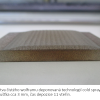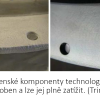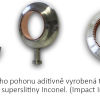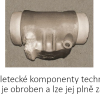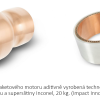Cold Spray - technology for coating, component repair and additive manufacturing
Technology description
| The name of the technology: | Cold Spray - technology for coating, component repair and additive manufacturing |
|---|---|
| Challenge: |
Cold Spray (supersonic particle deposition) is an innovative method of deposition of metals, metal alloys and metal mixtures for a variety of applications. It enables the deposition of functional/protective surface layers for increased durability and reliability, repair of damaged components to reduce costs, or extremely fast and cost-effective 3D printing. Thermal spray technologies are industrial group of method for deposition of thick surface coatings, based on melting of the added material. Unfortunately, this triggers a range of deficiencies (such as inhomogeneity or porosity of the coatings, oxidation of metals or alloys, residual stresses lowering the adherence, or deposition efficiency lowering the economy). |
| Description: |
As opposed to the older thermal spray method, the unique cold spray technology deposits the materials below their melting points. Thereby, it allows treatment of even sensitive materials and, at the same time, avoids the deficiencies of its older counterparts. Cold sprayed materials are homogeneous, without porosity, have excellent adherence and strength. On top of that, the technology is not limited either in the deposit thickness or the component size. This allows to use it also for repairs of damaged components (e.g., refurbishment of teeth in cogwheels) and even for 3D print. Needless to say, this concept significantly broadens the applicability for industrial use. We offer our experience and know-how for a joint mid/long-term development of prototypes or proof of concepts, or innovation of products, all backed by expert analytical tools available at our institute. In collaboration with established industrial partners, we further offer production of the components, including testing of the function-critical properties. We also offer mentoring, education and training of your employees. Main benefits: • Treatment of pure metals and alloys without oxidation or other detrimental changes • Deposition of dense, high quality coatings with superior mechanical properties • Work with bulky components (up to several meters) • Fast deposition, very high material efficiency, great process economy • 3D print of reflective metals or blends of materials with highly dissimilar melting points • Order of magnitude faster print (up to 80 kg/h) and reduced costs (up to 50×) as compared to laser-based AM methods |
| Commercial opportunity: |
• Additive manufacturing of complex components • Repairs and restoration of damaged engineering and other components • Mechanically strong coatings for load-bearing components, protective coatings against corrosion |
| IP protection status: | |
| Development status: |
Phase 3Corresponds with TRL 5 and TRL 6 Technology validation and implementing it in real environment. Testing the technology outside of the laboratory and its adjustment to external conditions.
|
| Partnering strategy: | Collaboration licensing |
| More information: | Odborný garant: Ing. Jan Čížek, Ph.D. z Ústavu fyziky plazmatu AV ČR, v. v. i. |
| Images: | |
| Categories: | Nanotechnology Engineering |
| Institution: | Institute of plasma physics |
| Owner of a technology: | Ústav fyziky plazmatu AV ČR, v. v. i. |
